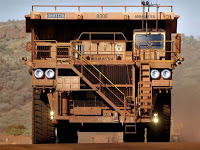The Technology of Self-driven Cars, Trucks and Buses
Driver-less Vehicles Have a Huge Downside

Many people are excited about the prospect of having a self-driven car. They envision sitting comfortably in the vehicle, reading their paper, or catching up on work.
Experts are telling us that there will be millions of fewer road deaths and, once the technology is developed, probably big financial savings.
At first glance, it sounds great, and after a long period of adjustment, it no doubt will mean big gains for us all.
But for several years there will be a huge downside. Businesses are licking their chops, looking forward to having fleets of self-driven vehicles. Millions of truckers will lose their jobs.
I am no fan of trucking – the goods in most of those damn monsters damaging our highway should be moved by rail.
Here’s the coming threat: In Canada alone, there are more than 600,000 mostly men employed to drive motorized vehicles. This includes 260,000 truck drivers, 90,000 delivery and courier drivers and 97,000 heavy equipment operators.
The transition is already taking place. In Australia, mining giant Rio Tinto has a fleet of three dozen autonomous, driverless haul trucks working at locations across the country. They’re all controlled remotely from Perth, nearly a thousand miles from the mines. The vehicles use a combination of sensors to navigate around, primarily radar and GPS.
One of the companies developing the technology is Caterpillar, much hated in Canada because it abandoned its operations here.
Here in Canada, Suncor Energy has been testing driverless giant vehicles at its tar sands locations, and this week entered into a five-year agreement with a Japanese manufacturer to purchase new heavy haulers for its mining operations. All the new trucks will be “autonomous-ready,” meaning they are capable of operating without a driver.
Suncor will save millions of dollars, but for the company’s roughly 1,000 heavy-haul truck operators, the prospect of driverless trucks has raised more immediate fears of significant job losses. The company says that at least 800 people will lose their jobs.
Meanwhile, a business group is researching the feasibility of a driverless trucking corridor that would be built between Canada and Mexico.
So think of job losses multiplying many times when this technology moves across the country. Unless the resulting unemployment is managed properly by government – and I’m not holding my breath – this could be the equivalent of the thousands of angry and unemployed men who came back to Canada after the Second World War.
Nick Fillmore is a veteran journalist/activist with a great interest in the importance and nature of independent media. Read other articles by Nick, or visit Nick’s website.

